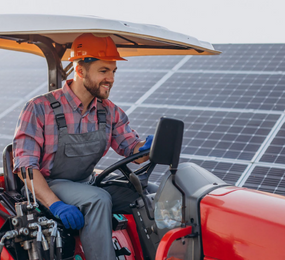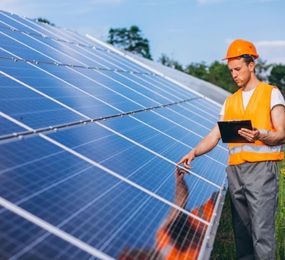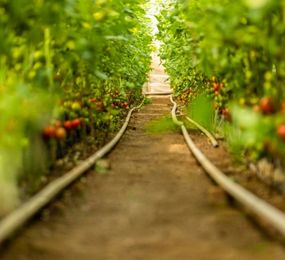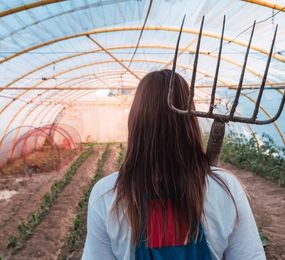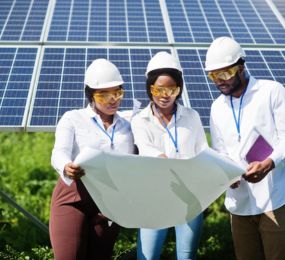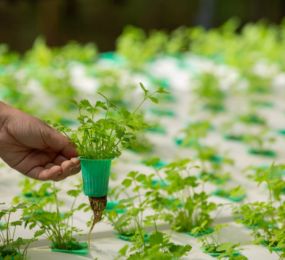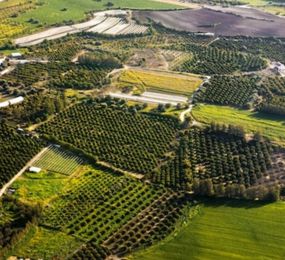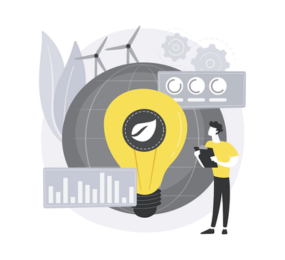As the world grapples with the challenges of climate change and increasing energy demands, innovative solutions are needed to secure both food and energy for a growing population. Enter AgriVoltaics, a groundbreaking technology that seamlessly integrates solar photovoltaic (PV) panels with agricultural practices. This synergistic approach offers a multitude of benefits for both agriculture and energy production, paving the way for a more sustainable future.
Boosting Food Production and Security:
-
Land-use Optimization: AgriVoltaics maximizes land utilization by enabling simultaneous food production and energy generation on the same plot. This efficient strategy combats land scarcity and allows for increased food production without sacrificing valuable agricultural land.
-
Microclimate Control: The shade cast by PV panels creates a favorable microclimate for crops, protecting them from scorching sunlight and extreme temperatures. This can lead to higher yields and improved resilience against weather-related stress, enhancing food security, especially in regions prone to droughts and heatwaves.
-
Water Conservation: AgriVoltaics reduces evapotranspiration, the process by which plants lose water through their leaves. This translates to significant water savings, making the technology particularly valuable in arid regions where water resources are scarce.
Powering a Sustainable Energy Future:
-
Renewable Energy Generation: AgriVoltaics harnesses the power of the sun to generate clean and renewable energy, contributing to the reduction of greenhouse gas emissions and mitigating climate change. This decentralized approach to energy production fosters energy independence and resilience for communities.
-
Efficient PV Panel Performance: The cooler microclimate created under the panels can improve the efficiency of PV panels, leading to higher energy production. This optimizes the economics of AgriVoltaics projects and makes them more attractive investments.
-
Grid Stabilization: Integrating solar energy with agricultural practices can help stabilize the electricity grid by providing a distributed source of renewable energy. This can reduce reliance on fossil fuel-based power generation and contribute to a more secure and sustainable energy infrastructure.
Beyond its direct benefits, AgriVoltaics offers additional advantages for both sectors:
-
Increased income for farmers: Revenue generated from selling solar energy provides farmers with an additional income stream, enhancing their financial stability and supporting sustainable agricultural practices.
-
Community development: AgriVoltaics projects can create jobs and stimulate local economies, contributing to rural development and community well-being.
-
Biodiversity preservation: The shade provided by the panels can create habitats for beneficial insects and pollinators, promoting biodiversity and enhancing ecosystem health.
A Promising Future
The 3rd Annual AgriVoltaics Europe, taking place on November 6-7, 2024, in Vienna, Austria, will delve deeper into the transformative potential of this technology. Experts and stakeholders from across the globe will gather to discuss the latest advancements, share best practices, and explore innovative applications of AgriVoltaics. As research and development continue to advance, AgriVoltaics holds immense promise for revolutionizing both agriculture and energy production, ushering in a future where food security and clean energy go hand-in-hand.
By harnessing the power of both sunlight and innovation, AgriVoltaics stands to be a game-changer in the quest for a more sustainable future. This promising technology offers a win-win scenario for both agriculture and energy production, ensuring a brighter future for generations to come.
To register or learn more about the Forum please check here:https://bit.ly/41cUdvr.
For more information and group participation, contact us: [email protected]


